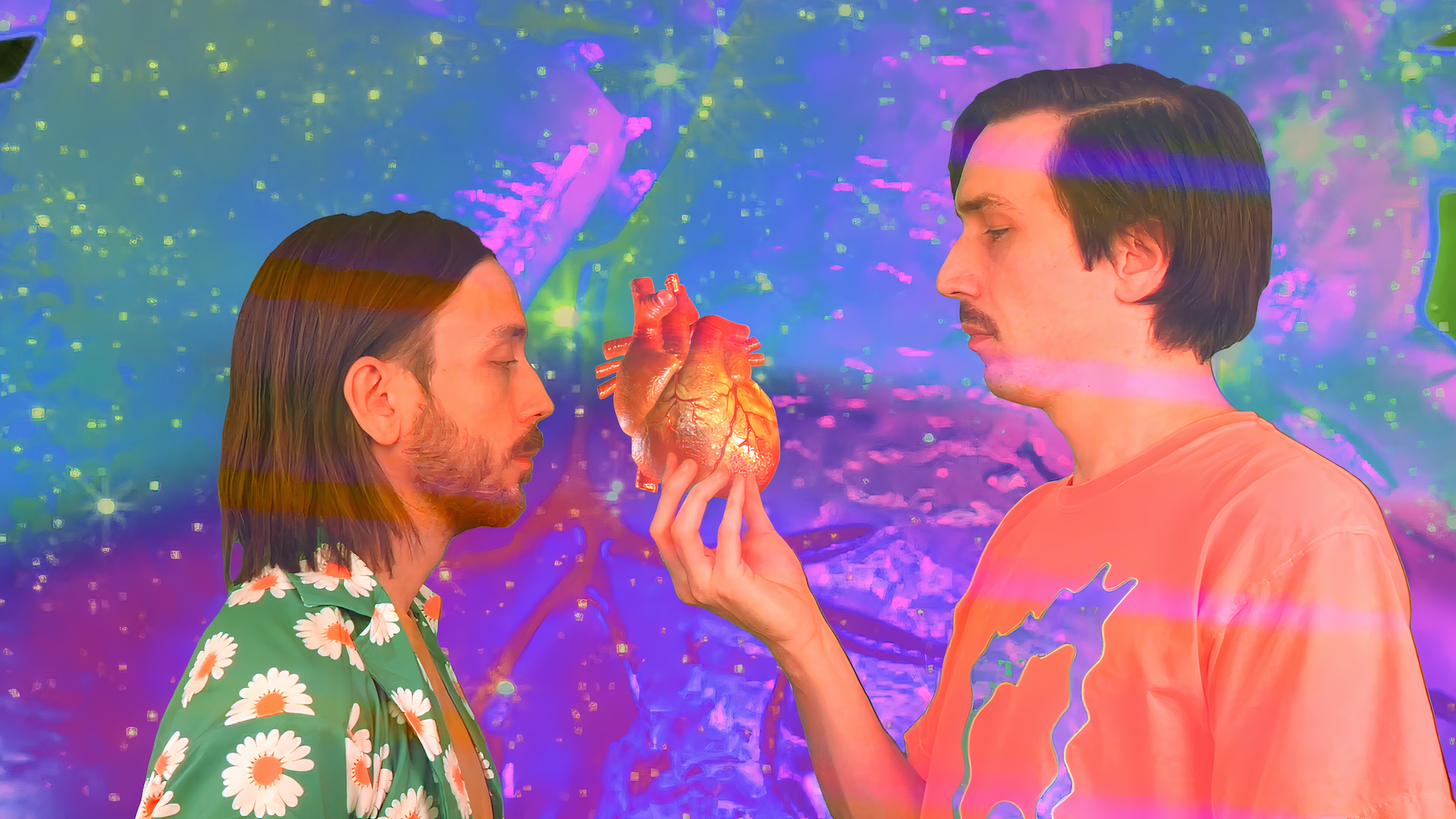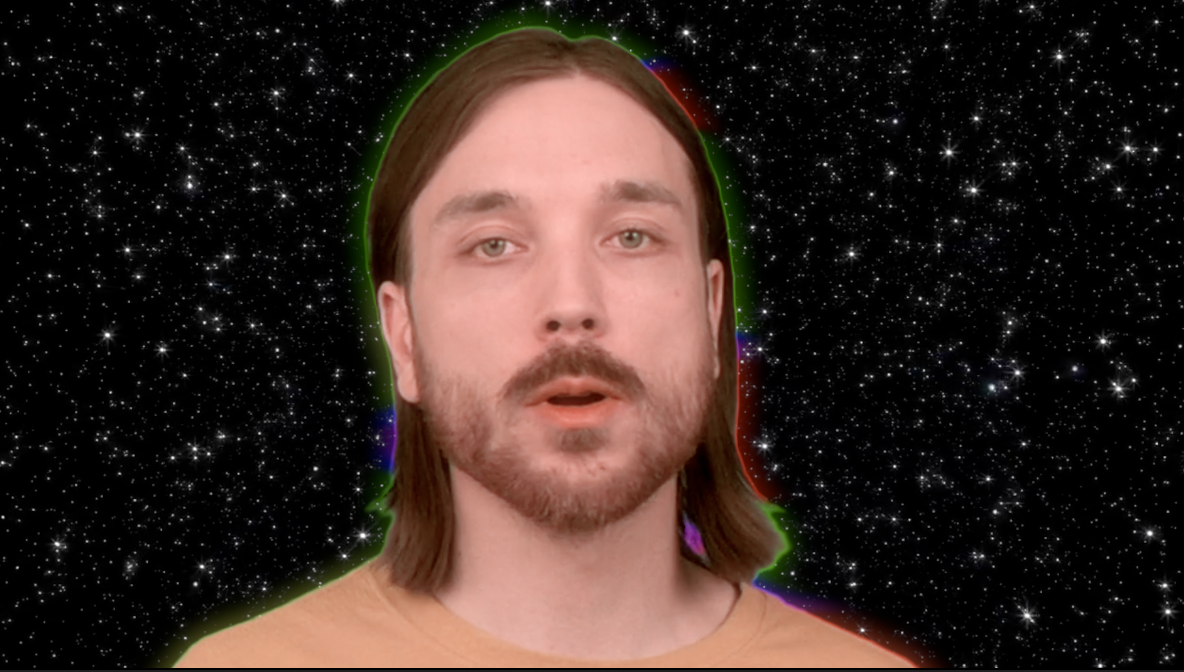FEATURED ARTIST: Bliss Nova Covers Yes’ “Owner of a Lonely Heart” With Modern Surrealism
This isn’t cool in a dorky, ironic way.. Bliss Nova is actually cool here, and so are the source materials. Snakes are cool. Eagles are cool. Skulls? Cool. Bananas and apples? Yeah, it’s cool to eat healthy. It’s cool to feel good. Being genuine is cool, and yeah it’s a little detached, but not detached in a “I’m a loner” way, but more so in a “technology is creating several new realities, is anyone able to keep up?” kind of way.

You hear a lot of people say “covering a song is hard” but that’s kind of stupid, that’s not really true at all. It’s actually super easy, the song is already written for you haha. Making a good video for a cover is probably harder.. making an old song visually modern is the real challenge. Bliss Nova have grown leaps and bounds in the past year or two, pretty impressively so, and a big part of that has been their embrace of modern surrealism, expressing how crazy a time we’re living in. And they’ve managed to do it in a way that’s all their own, a lighter, friendlier approach, not negative or imposing. Their absurdist new visual of Yes’ “Owner of a Lonely Heart” revels in the absurd, while staying warm and inviting.
Bliss Nova does a great job of keeping the bones of the track on full display the whole time, only accenting the boomer rock hook with bongos and 21st century production zip-zaps. The bass is fat, the drums are tight, the synths are dated and goofy but in a sweet and genuine way. I love that this is kind of a psuedo-reggae track without you even realizing it (I think it actually took me 6 listens while digging into this to realize it falls into that legit Lee Scratch Perry territory). But my favorite part of the track is definitely the outro; they give us just two minutes of the actual song and takes us out with a neo-psychedelic brain melt dreamscape.. well done! It’s a nice little Bliss Nova signature without distracting you from the original.

Again, the visual is what really intrigues me here. The green screen Tim & Eric, public access cable, socially awkward style video has been done to death, but this is legitimately not tired, it’s totally engaging. And I think that’s because that genre of video has entirely gone full circle, and it’s now just a canvas for more interesting stylistic choices to be cast upon it. This isn’t cool in a dorky, ironic way.. Bliss Nova is actually cool here, and so are the source materials. Snakes are cool. Eagles are cool. Skulls? Cool. Bananas and apples? Yeah, it’s cool to eat healthy. It’s cool to feel good. Being genuine is cool, and yeah it’s a little detached, but not detached in a “I’m a loner” way, but more so in a “technology is creating several new realities, is anyone able to keep up?” kind of way. And maybe, just maybe that’s why we cling to the old, the 70’s prog rock jams that bring us so much joy, to get through the tough parts of modern life. So to do that while making it all their own, takes finesse, which is what’s on display here.

Stream “Owner of a Lonely Heart” and B-side “Silver City”
Below is our exclusive interview with Dan and Joel Trzcinski of Bliss Nova:
-LSPR: It’s no secret that I’ve been working with and a fan of Bliss Nova for a little while now, but this is probably my favorite visual you guys have done yet. A lot of times “chillwave” bands have really atmospheric and dark videos, I love that this is a little more stark and colorful. It’s obviously neo-psychedelic, but also surrealist, like a Salvador Dali painting. Who made the video and tell us about the green screen scenes.
DT: As I understand, the nostalgic dreaminess of chillwave came about when internet-savvy indie-emo introverts were graduating high school during an economic recession, with not much more to do than cratedig on YouTube and become amateur bedroom producers with torrented DAWs. The lo-fi vintage “a e s t h e t i c” and escapist themes of lost paradises were inevitable in that way, so the transcendence of surrealism and psychedelia were perfect past movements to mine from for that sound.
And also early ‘80s synth pop. One of my formative influences, “Video Killed the Radio Star,” is the prime example — it’s got lyrics about artificiality, technology and memory, and its music video was the first to air on MTV. There’s a kind of optimistic faith in the consumerist utopian promises that wouldn’t start majorly falling apart until post-9/11, and then again in 2008.
The fact that Trevor Horn, the producer-songwriter of “Video,” also produced “Owner of a Lonely Heart” shows that it’s not a wild intellectual stretch to make. The original “Owner,” along with its two music videos, shows Yes adding cutting-edge pop production to their psychological psych rock. It’s progressive in every way. But the funny thing about past futurizing is that it always misses the mark from the perspective of the present. That’s a part of the charm, though, right?
In fact, vaporwave, chillwave’s twin, is simply the byproduct of our ironic love-hate relationship with how capitalism’s headlong hurtle into the future has drastically changed our existential landscapes via technological advances.
I wanted to make a video to capture precisely that — how ideology works, the human necessity (both individual and social) to imagine an idealized reality coming into being that eliminates contradiction. Yet, in a way, the very failure in achieving a realized self generates change — just not the intended, expected way.
For the artistic direction of the video, I was picturing those Animorphs book covers where the tweens turn into their spirit animal or whatever. It’s basically a pop surrealist restaging of Paradise Lost, I guess. I’d been reading a lot of Žižek (“We feel free because we lack the very language to articulate our unfreedom.”) and then wrote a silent screenplay about desiring l’objet petit a, the lost object, which was the basis for what we shot with the green screen. We were super excited to have Mica Tenenbaum of Magdalena Bay edit the video and add effects — she does incredible work building surreal virtual worlds, and her band’s music hits all the right spots.
JT: This was the most fun music video I’ve ever made and has opened up even more ideas for future ones. I’ll take any opportunity to explore the weirder side of things and transport ourselves (and the viewer) into different worlds we’ve created. With a green screen anything is possible, especially with the right editor. Mica did an amazing job, and we’ll most certainly be working with her again.
-LSPR: With recent releases your sound has been getting a little more accessible, less niche and nostalgic and more modern. I think an obvious mainstream influence that pops out right away is Tame Impala, but I’m sure you listen to a lot more deep cut bands with this sound. Who’s been influencing that growth in sound lately?
DT: A part of that shift, I think, is just the result of getting a better handle on sound design and learning how to put my particular strengths to work. Tame Impala is an honorable comparison, but more often than not I’m listening to music that is unlike what I make in a lot of ways — Sun Ra, Laraaji, Lee “Scratch” Perry, Julianna Barwick, Enya, to name a few — and then I bring those complex moods into a simpler pop context that grooves with inflections of hip hop, r&b and house. I generally try to eavesdrop on who’s who today, but I’m mainly interested in otherly oddities, usually from bygone eras.
JT: I think one thing that allows us to hit that sweet spot of “accessibility” is the combination of our interests. Daniel rarely dips too far into new music, while I’m constantly absorbing current releases and looking for new bands and songs. I create a lot of playlists and then share with Dan what I’m into. He has a brilliant way of writing stuff that incorporates my interests. And it’s always fun to take a demo into the studio where I can bring his demo drum parts to life on a real kit. Each release is an opportunity for us to not only refine our sound, but also to try new things. This track is a perfect example of that.
-LSPR: Taking on a cover can be tricky, but this is a great mix of being sincere while staying a little bit tongue in cheek. I mean, at the end of the day you guys are doing a boomer rock cover haha. You seem to really revel in the prog elements of the track too, how did you lay the foundation of this track in the studio?
DT: The proggiest part of the cover, the outro, came last. Everything else up to that point came easily, which I’d done by myself at home, basically making a psych-dub version after hearing the hook of the original for the first time. I was less interested in the bridge/vamp of the original, so I just had an unfinished demo when we brought it into the studio to polish things up and add a real kit.
With a looming deadline, eventually I realized that the most interesting takes on things are often weird misreadings that open up newer, truer possibilities — so dissolving the original’s intricate progressions into a hazy mantric pastiche made sense. Our good friend Jonathan Allen laid down a solid rock bassline for the outro that Chris Squire’s ghost would approvingly nod at.
As far as the cover choice goes, I didn’t really think about its significance until after I’d shown it to Joel and then Brennan at Ohio Recording Company. It was simply an initial urge to un-cover the sweetness of the original. But I suppose the choice presented itself. I just chose to follow through on a creative impulse. Doing so will usually make sense retroactively, in my experience.
-LSPR: Tell us about the B-side for this cover, it’s another Yes song called “Silver City” and is actually about our home city Toledo right? What’s the story behind that and how did you reimagine that?
DT: After I showed the demo of my cover to a friend, he told me Yes had a song about Toledo. We looked it up, and the b-side to “Owner of a Lonely Heart,” called “Our Song,” was written about their unforgettable experience at the Toledo Sports Arena in 1977. How could I not do something with that as well? What I did was turn a few samples from it into a bittersweet ambient daydream, adding in some of my own field recordings and drones, and then renaming it “Silver City” after the line from the original, “Toledo’s got to be the silver city.”
The original b-side came across to me as an optimistic paean to my hometown, so in response I diffused its essence into a soundscape of sleepy hopefulness.
-LSPR: Last question, this one is for Dan; you’ve got really pretty eyes, I never noticed until this video.. care to comment?
DT: First, I’m flattered — thank you. I usually prefer to close the blinds to the windows of my soul, but occasionally I like to look out and see and be seen.